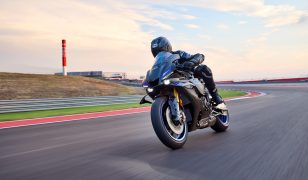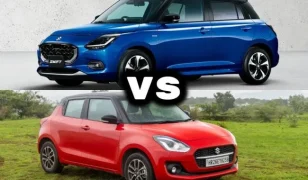The 24 Hours of Le Mans: the second pinnacle of racing world?

The 24 Hours of Le Mans (better known as the 24 Heures du Mans in French) is one of the most exhilarating races that takes place during the calendar year. It is the oldest, the most dangerous and the most prestigious race in motorsport. Many drivers from every nook and cranny of the world racing stage come to LeMans for the ultimate test of skill and endurance. It is one of the most famous motorsport races in the world and is often called as the “Grand Prix of Endurance and Efficiency”. The event represents one of the parts of the Triple Crown of Motorsport; other events namely the Indianapolis 500 for Indycar, and the Monaco Grand Prix for F1. This race, over the years, has evolved in terms of the rules and regulations, but not in terms of its traditions. The race is organized by a committee called the “Automobile Club de l’Ouest” (ACO) and runs on the Circuit de la Sarthe in Le Mans, France. This track has a mixture of closed public roads and a specialist racing circuit (which is the part of the French MotoGP Grand Prix). The main outcome of this race is that all the teams and drivers who are racing have to balance outright speed with the cars’ ability to race for 24 hours without suffering from reliability problems mechanical. This year sees the 85th running of this event. Since 2012, this event has been a round of the FIA World Endurance Championship. This year, it will be the second and the last round of the new WEC Super-Season which runs from May 2018 to June 2019.
The current 24 Hours of Le Mans has 3 different categories of cars all racing at the same time. They are the LMP1 (Le Mans Prototype 1), LMP2 (Le Mans Prototype 2) and two types of GT (Grand Turismo) classes, namely GTE-Pro (Grand Turismo Endurance Professional) and GTE-Am (Grand Turismo Endurance Amateur).
LMP1 cars are the full fledged prototypes that are more advanced than a current F1 car. This category is reserved exclusively only for the private teams. They teams don’t receive any financial support and commercial support from the other teams. Any support from a manufacturer related to the chassis side is not allowed. It is mandatory to consider traction control as a part of the chassis system. These cars don’t have a regulation on engine sizes and types of fuel used and the power output, but has a few restrictions like ban on rotary engines use, only 4 stroke engines to be used, limit of upto 5.5 litre engine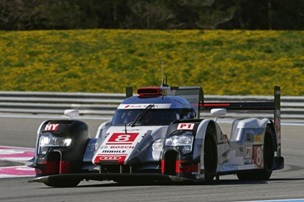 s for non-ERS cars and maximum 5 engines per car per season. Also the bodywork dimensions are the same forever car along with the weight of the car which is limited to 878 kg (hybrid) and 833 kg (non-hybrid). It has a restriction on the fuel flow rate and the amount of fuel used per lap. Also the fuel tanks for petrol powered cars has to be 62.3 litres (cars with ERS) and 75 litres (cars with no ERS). Diesel engines also have a max fuel tank size of 50.1 litres (cars with ERS only). In terms of dimensions, the wheelbase has no restrictions, but it should match to that registered in the rules. The car numbers for this class have a pantone red background with the numbers in white. The overall length of the car must not go above 4650 mm (4.65 m). The front overhang length should be restricted to only 1000 mm (1 m). The rear overhang length should be limited to only 750 mm (0.75 m). The overall width of the car must not go above 1900 mm (1.9 m) and below 1800mm (1.8 m). The bodywork height must not go above 1050 mm to the reference plane.
s for non-ERS cars and maximum 5 engines per car per season. Also the bodywork dimensions are the same forever car along with the weight of the car which is limited to 878 kg (hybrid) and 833 kg (non-hybrid). It has a restriction on the fuel flow rate and the amount of fuel used per lap. Also the fuel tanks for petrol powered cars has to be 62.3 litres (cars with ERS) and 75 litres (cars with no ERS). Diesel engines also have a max fuel tank size of 50.1 litres (cars with ERS only). In terms of dimensions, the wheelbase has no restrictions, but it should match to that registered in the rules. The car numbers for this class have a pantone red background with the numbers in white. The overall length of the car must not go above 4650 mm (4.65 m). The front overhang length should be restricted to only 1000 mm (1 m). The rear overhang length should be limited to only 750 mm (0.75 m). The overall width of the car must not go above 1900 mm (1.9 m) and below 1800mm (1.8 m). The bodywork height must not go above 1050 mm to the reference plane.
LMP2 cars are closed cockpit cars, destined only for teams who don’t depend on their respective manufacturers. The price of the car, without engines 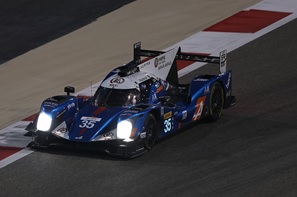 or homologated electronics, must not exceed €483,000. These cars, unlike their LMP1 counter-parts, don’t have that much freedom in terms of the regulations, but what they do have is that the engine size is limited to a 4.2 litre engine which should not produce not more than 600 bhp. It should also consist of non-direct fuel injection. The car numbers for this class have a pantone blue backing with the numbers in white just like LMP1. These cars must weigh upto 930 kg minimum and the fuel tanks must carry a maximum of 75 litres. In terms of dimensions, these cars are largely similar to the LMP1 cars.
or homologated electronics, must not exceed €483,000. These cars, unlike their LMP1 counter-parts, don’t have that much freedom in terms of the regulations, but what they do have is that the engine size is limited to a 4.2 litre engine which should not produce not more than 600 bhp. It should also consist of non-direct fuel injection. The car numbers for this class have a pantone blue backing with the numbers in white just like LMP1. These cars must weigh upto 930 kg minimum and the fuel tanks must carry a maximum of 75 litres. In terms of dimensions, these cars are largely similar to the LMP1 cars.
Now we come to the GTE class. The “Le Mans” Grand Touring Endurance class (LMGTE) consists of normal road cars with a few modifications that is done within the regulations. This class is divided into two groups- a class destined more especially to professional (LMGTE PRO) and a class destined more especially to amateur drivers (LMGTE AM). These cars have a limit on the engine size. If the team entering this class decides to add a naturally 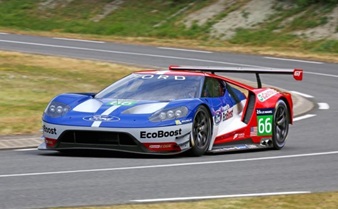 aspirated engine, then the engine size must not exceed 5.5 litres. Along with this, if the team entering this class decides to add a turbocharged or supercharged engine, then the base engine size is limited to just 4.0 litres. The dimensions of the car are restricted in order to not gain any advantage of a longer car, longer wheelbase or even a wider car in order to aid aerodynamics. The overall length these cars should not exceed 4800 mm (4.8 m). The front overhang length (distance from the centre of the front wheel to the furthest point at the front) should not exceed 1250 mm (1.25 m). The rear overhang(distance from the centre of the rear wheel to the furthest point at the rear) should not exceed 1100 mm (1.10 m). The overall width excluding the rear view mirrors should not exceed 2050 mm (2.05 m). The back colour for the LMGTE-Pro cars is pantone green with white numbers and for LMGTE-Am, it is pantone orange with white numbers. The minimum weight of the car without driver, fuel or fluids on board is 1245 kg. The Endurance Committee has the power to change the minimum weight of any car in order to keep the performance balance between each car constant. The maximum fuel tank size is 90 litres, because of the performance balance adjustments.
aspirated engine, then the engine size must not exceed 5.5 litres. Along with this, if the team entering this class decides to add a turbocharged or supercharged engine, then the base engine size is limited to just 4.0 litres. The dimensions of the car are restricted in order to not gain any advantage of a longer car, longer wheelbase or even a wider car in order to aid aerodynamics. The overall length these cars should not exceed 4800 mm (4.8 m). The front overhang length (distance from the centre of the front wheel to the furthest point at the front) should not exceed 1250 mm (1.25 m). The rear overhang(distance from the centre of the rear wheel to the furthest point at the rear) should not exceed 1100 mm (1.10 m). The overall width excluding the rear view mirrors should not exceed 2050 mm (2.05 m). The back colour for the LMGTE-Pro cars is pantone green with white numbers and for LMGTE-Am, it is pantone orange with white numbers. The minimum weight of the car without driver, fuel or fluids on board is 1245 kg. The Endurance Committee has the power to change the minimum weight of any car in order to keep the performance balance between each car constant. The maximum fuel tank size is 90 litres, because of the performance balance adjustments.
This race is considered to be the triple crown of the motorsport calendar. It is a race that everyone wants to win along with the Monaco Grand Prix and the Indianapolis 500 and also be the F1 world champion. Many people have tried to achieve this triple crown, which is considered to be a “Triple 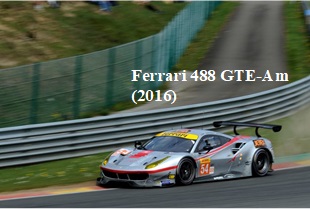 Slam”. Only Graham Hill has achieved all this by winning Le Mans in 1972, the Indy 500 in 1966 and the Monaco Grand Prix 5 times (1963, 64, 65, 68 and 69). He also won the F1 world championship in 1962 and 1968. A few current F1 drivers have tried to achieve this, but no one other than Hill has achieved it. Nico Hulkenberg and Brendon Hartley are the only F1 drivers in the current line-up who have won at Le Mans but haven’t won either the Monaco GP or the Indy 500. As of 2018, Fernando Alonso has won this race to complete the double of winning at Monaco and at Le Mans. He had participated in Indy last year but didn’t manage to win the race, after suffering a engine problem. As of the various manufacturers who have raced here, Porsche have the most victories (19 wins) followed by Audi (13 wins) and Ferrari (9 wins). Ford is the most successful non-European brand to win Le Mans with 5 wins. Mazda (1991) and Toyota (2018) are the only Japanese manufacturers to win at Le Mans. Mazda won the race with a rotary Wankel engine, the only manufacturer to do so. Audi won all of its engines with a diesel power plant, as did Peugeot in 2009.
Slam”. Only Graham Hill has achieved all this by winning Le Mans in 1972, the Indy 500 in 1966 and the Monaco Grand Prix 5 times (1963, 64, 65, 68 and 69). He also won the F1 world championship in 1962 and 1968. A few current F1 drivers have tried to achieve this, but no one other than Hill has achieved it. Nico Hulkenberg and Brendon Hartley are the only F1 drivers in the current line-up who have won at Le Mans but haven’t won either the Monaco GP or the Indy 500. As of 2018, Fernando Alonso has won this race to complete the double of winning at Monaco and at Le Mans. He had participated in Indy last year but didn’t manage to win the race, after suffering a engine problem. As of the various manufacturers who have raced here, Porsche have the most victories (19 wins) followed by Audi (13 wins) and Ferrari (9 wins). Ford is the most successful non-European brand to win Le Mans with 5 wins. Mazda (1991) and Toyota (2018) are the only Japanese manufacturers to win at Le Mans. Mazda won the race with a rotary Wankel engine, the only manufacturer to do so. Audi won all of its engines with a diesel power plant, as did Peugeot in 2009.
The 24 Hours of Le Mans has been a proving ground for innovation since its inception in 1923. It has played a big hand in reshaping the aerodynamics 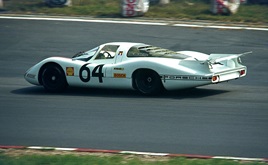 of the cars as the times have passed. At the beginning, all the cars were shaped like boxes which was not aerodynamic enough which also increased the tendency for rolling. As the years have gone by, more emphasis was given to aerodynamic performance and using the air as a performance gainer, which can be seen in modern high-end cars. This race has been a proving ground for engine technology too. Engine sizes over the years have varied massively from a 569 cc engine in the Simca 5 in 1939 to a 8000 cc V10 engine in the SRT Viper GTS-R in 1996. Various types of forced induction technologies like turbocharging and supercharging
of the cars as the times have passed. At the beginning, all the cars were shaped like boxes which was not aerodynamic enough which also increased the tendency for rolling. As the years have gone by, more emphasis was given to aerodynamic performance and using the air as a performance gainer, which can be seen in modern high-end cars. This race has been a proving ground for engine technology too. Engine sizes over the years have varied massively from a 569 cc engine in the Simca 5 in 1939 to a 8000 cc V10 engine in the SRT Viper GTS-R in 1996. Various types of forced induction technologies like turbocharging and supercharging 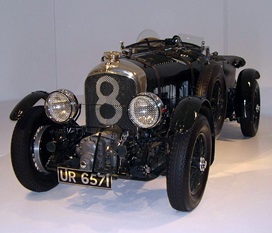 were also tested here. Supercharging was started as early as 1929 and turbocharging did not appear as late as 1974. Along with this, Gas turbine powered engines (Rover with BRM engines in 1963) and Wankel rotary engines (Mazda engines) were also tested here. This race was also a proving ground for various types of other fuels like diesel and biofuels. Audi and Peugeot have been the most successful company who used diesel engines to win this race. This race has been the biggest influence for hybrid engine technology (a little more over the last decade).
were also tested here. Supercharging was started as early as 1929 and turbocharging did not appear as late as 1974. Along with this, Gas turbine powered engines (Rover with BRM engines in 1963) and Wankel rotary engines (Mazda engines) were also tested here. This race was also a proving ground for various types of other fuels like diesel and biofuels. Audi and Peugeot have been the most successful company who used diesel engines to win this race. This race has been the biggest influence for hybrid engine technology (a little more over the last decade).
Concluding, I will love to say that even though I am a out-and-out F1 fan, I have been really intrigued to write about the 24 hours of Le Mans and would like all of the readers to enjoy it as well.



